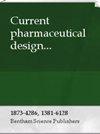三维打印技术在药物输送系统中的最新发展和应用:新的研究方向和未来趋势
IF 2.6
4区 医学
Q2 PHARMACOLOGY & PHARMACY
引用次数: 0
摘要
近年来,3D 打印技术的出现已成为一场关键的技术革命,使制药行业能够开发和生产创新的给药方法。本综述将重点讨论 3D 打印技术的设计、概念、技术、主要挑战和潜在优势。这项技术主要是在传统和增材制造过程中实现快速、安全和低成本的药物制剂开发。这一现象对当前和未来的医药发展有着广泛的影响。喷墨打印、按需滴注打印、Zip dose、电流体动力打印(Ejet)等先进技术是当前给药系统的重点,可为患者提供更多便利,提高用药依从性。本文简要讨论了 CAD 软件等各种软件的当前和未来应用,以及 3D 和 4D 打印技术的监管问题。关于三维和四维打印技术的发展前景,新开发的方法很可能主要用于药房和医院,以满足个人或特殊群体的独特需求。因此,与二维打印相比,当务之急是继续推进和改进这些技术,以克服上述监管和技术障碍,使其适用于各种给药系统,并提高每一代患者的接受程度。本文章由计算机程序翻译,如有差异,请以英文原文为准。
Recent Developments and Applications of 3D-Printing Technology in Pharmaceutical Drug Delivery Systems: A New Research Direction and Future Trends
The advent of 3D printing technology has emerged as a key technical revolution in recent years, enabling the development and production of innovative medication delivery methods in the pharmaceutical sector. The designs, concepts, techniques, key challenges, and potential benefits during 3D-printing technology are the key points discussed in this review. This technology primarily enables rapid, safe, and low-cost development of pharmaceutical formulations during the conventional and additive manufacturing processes. This phenomenon has wide-ranging implications in current as well as future medicinal developments. Advanced technologies such as Ink-Jet printing, drop-on-demand printing, Zip dose, Electrohydrodynamic Printing (Ejet) etc., are the current focus of the drug delivery systems for enhancing patient convenience and improving medication compliance. The current and future applications of various software, such as CAD software, and regulatory aspects in 3D and 4D printing technology are discussed briefly in this article. With respect to the prospective trajectory of 3D and 4D printing, it is probable that the newly developed methods will be predominantly utilized in pharmacies and hospitals to accommodate the unique requirements of individuals or niche groups. As a result, it is imperative that these technologies continue to advance and be improved in comparison to 2D printing in order to surmount the aforementioned regulatory and technical obstacles, render them applicable to a vast array of drug delivery systems, and increase their acceptability among patients of every generation.
求助全文
通过发布文献求助,成功后即可免费获取论文全文。
去求助
来源期刊
CiteScore
6.30
自引率
0.00%
发文量
302
审稿时长
2 months
期刊介绍:
Current Pharmaceutical Design publishes timely in-depth reviews and research articles from leading pharmaceutical researchers in the field, covering all aspects of current research in rational drug design. Each issue is devoted to a single major therapeutic area guest edited by an acknowledged authority in the field.
Each thematic issue of Current Pharmaceutical Design covers all subject areas of major importance to modern drug design including: medicinal chemistry, pharmacology, drug targets and disease mechanism.

 求助内容:
求助内容: 应助结果提醒方式:
应助结果提醒方式:


